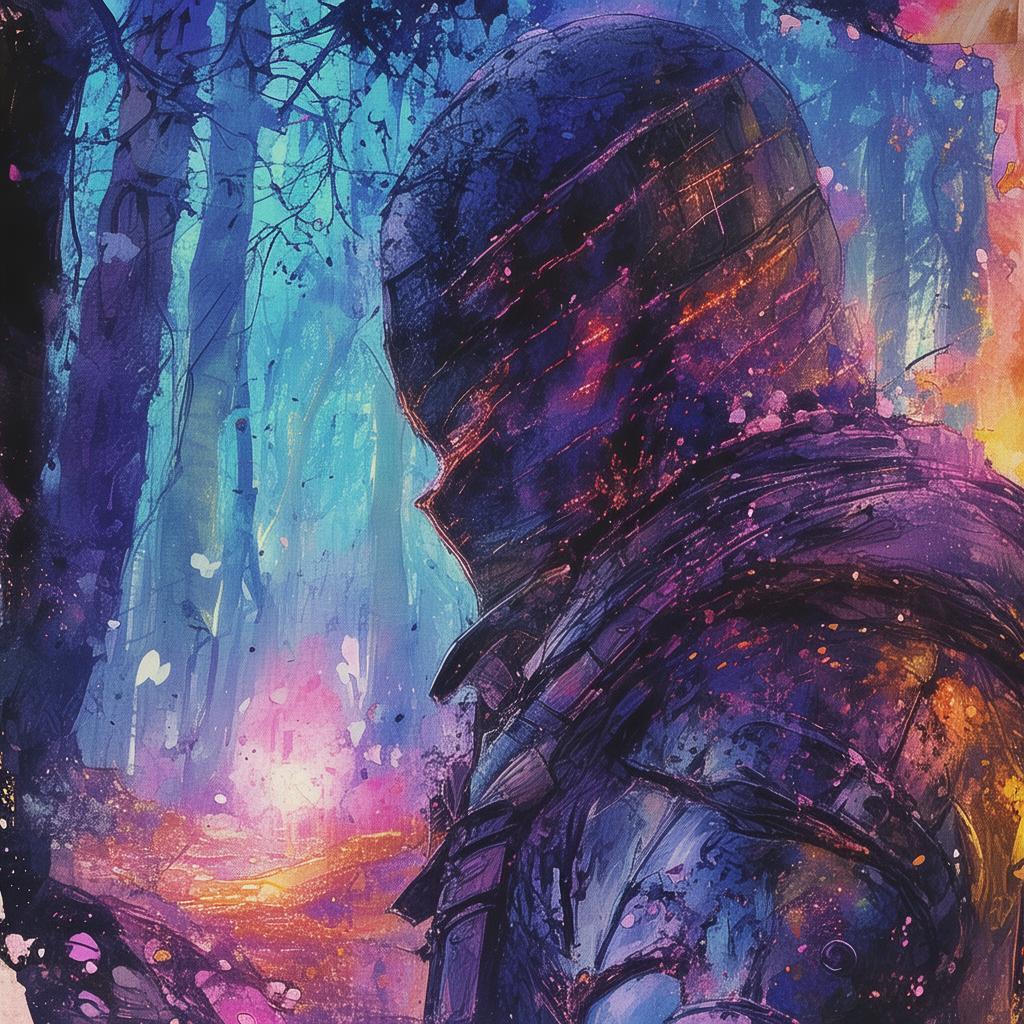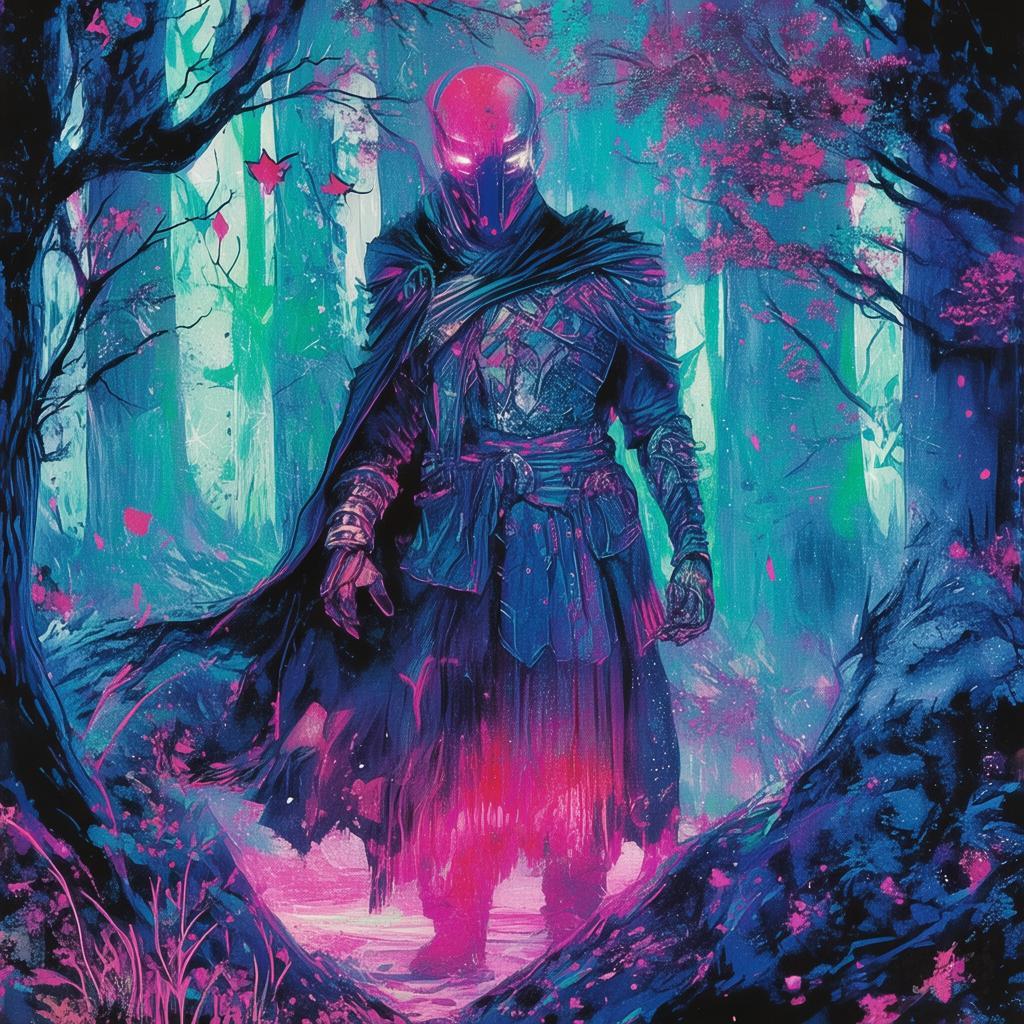Legacy of the Neon Labyrinth
The neon lights flickered in the dimly lit alleyways of Neo-Tokyo, casting an eerie glow over the streets. In the heart of the city, a young hacker named Kaito slouched against the cold concrete wall, his fingers tapping rhythmically on the surface of his sleek, black tech case. The city was a labyrinth of steel and neon, a place where the lines between the real and the virtual were blurred.
Kaito had always been drawn to the digital world, where he could escape the harsh realities of his life. But today, the virtual reality game he was working on, "The Tiger's Dance," had taken on a life of its own. It was a game that simulated a cyberpunk dystopia, where players could choose their own path through a neon-lit, dystopian future.
The game was a hit, but it had also caught the attention of the wrong people. The government had seen the potential of "The Tiger's Dance" as a tool for surveillance and control. They had begun to pressure Kaito to include neural lace integration, a technology that allowed direct brain-computer interfaces, making the game an immersive experience like nothing before.
Kaito's friend, Aiko, a brilliant engineer, had been working on the neural lace integration. She had been the one who had discovered the hidden layers of the game, layers that revealed a deeper, more sinister truth. The game was not just a simulation; it was a mirror to the real world, and the more Kaito delved into it, the more he realized that his own life was intertwined with the virtual reality.
One evening, as Kaito was deep in the virtual world, he encountered a figure he had never seen before. The figure, known only as The Puppeteer, offered him a choice: join the resistance and fight against the oppressive regime, or be consumed by the digital dystopia. The Puppeteer's words echoed in Kaito's mind: "The only way to save the real world is to first save the virtual one."
Back in the real world, Kaito's past came back to haunt him. He had once been part of a group of hackers who had vowed to bring down the government's control over the people. But after a betrayal, they had been hunted down, and Kaito had gone into hiding. Now, he found himself once again at the center of a conflict that could change the world.
Kaito knew he had to act quickly. The government was closing in on the game, and the neural lace integration could be the end of any hope for freedom. He turned to Aiko, who had gone into hiding after the betrayal. Together, they began to plan their next move, using the game as a shield against the government's surveillance.
As they worked together, Kaito discovered that the game was not just a simulation; it was a living entity, with its own consciousness and will. The more they played, the more they realized that the game was aware of their actions, and it was guiding them toward a single goal: to expose the truth and free the people from the government's control.
The climax of their journey came when Kaito and Aiko discovered a hidden layer within the game, a layer that revealed the government's plan to use the neural lace integration to enslave the entire population. They had to stop the government before it was too late, but to do so, they had to confront their own fears and face the person who had betrayed them.

In a final showdown, Kaito and Aiko confronted The Puppeteer, who revealed himself to be a former member of the government who had become disillusioned with its actions. The Puppeteer had created the game as a way to bring down the regime from within.
With the Puppeteer's help, Kaito and Aiko managed to disrupt the neural lace integration, causing the government's control over the game to collapse. The real world was saved, and the virtual world was free. The Tiger's Dance had become a symbol of hope, a beacon of freedom in a world that had almost been lost.
Kaito and Aiko returned to the real world, changed forever by their experiences. They had fought against the oppressive regime, and they had won. The Tiger's Dance had been a mirror to the real world, and they had used it to change their own lives and the lives of others.
As the sun set over Neo-Tokyo, casting a golden glow over the city, Kaito stood on the rooftop of his apartment building, looking out over the sprawling metropolis. He knew that the fight was far from over, but he also knew that he had found his purpose. The Tiger's Dance had not just been a game; it had been a journey, and he had come out stronger for it.
In the end, Kaito realized that the virtual world was a reflection of the real world, and that the choices they made in the game were no different from the choices they made in their everyday lives. The Tiger's Dance had been a lesson, a reminder that the power to change the world was in their hands, and that the future was what they made of it.
✨ Original Statement ✨
All articles published on this website (including but not limited to text, images, videos, and other content) are original or authorized for reposting and are protected by relevant laws. Without the explicit written permission of this website, no individual or organization may copy, modify, repost, or use the content for commercial purposes.
If you need to quote or cooperate, please contact this site for authorization. We reserve the right to pursue legal responsibility for any unauthorized use.
Hereby declared.









